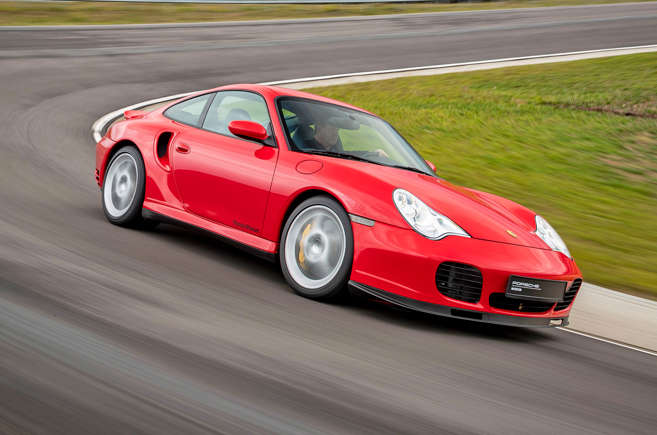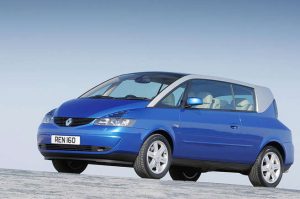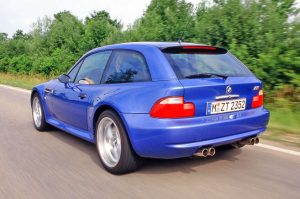Some controversial car designs that aged beautifully
For this reason, you wouldn’t blame manufacturers for wanting to play it safe, but thankfully they occasionally like to shock us. Sometimes, we’re treated to really controversial proportions and startling details, and every so often we’ll see a completely new category of car.
Let’s look at 20 cars that caused a lot of controversy when they were released, but we reckon have only improved in time:
When Renault previewed the Avantime in 1999, the French firm called it a “Coupespace”, a totally new type of car combining luxury, comfort, and sportiness with a progressive visual presence. But although designers sang its praises, the public weren’t moved enough to buy these artworks on wheels, and between 2001 and 2004 only around 8000 Avantimes were sold.
In the late 1990s and early 2000s, BMW Z3 roadsters were everywhere, but the coupe version was far scarcer. Many car fans took a visceral disliking to this shooting brake, referring—rather unkindly—to it as a form of footwear. The clown shoe. Its rear wheel arches were far more prominent than people were used to at the time, and it felt overblown, like a caricature of a sports car.
But today, we’re used to super-inflated proportions and two and a half decades after its release, the BMW Z3 M Coupe wears its exaggerated styling very well. This fearsome rarity has come of age.
When a firm that has always created sports cars decides to do something entirely different, you have to expect people to make a bit of a fuss. For this reason, the design of the first-generation Cayenne was always going to go down like a lead balloon no matter what this SUV ended up looking like. But, over 20 years after it first arrived, the MK1 Cayenne still looks relevant.
Its characteristically clean, muscular surfaces have aged well, and it looks understated in comparison to a lot of today’s behemoths. The rear has always had a solid presence, and the midlife facelift is a big improvement on the original front end.
Alfa Romeo’s range-topping 166 saloon featured an angled shoulder line and a relatively slim side window, giving it incredibly sporty proportions. Those features are normal nowadays on executive cars, but weren’t when it was first sold in 1996, so people weren’t ready to embrace such an out-and-out sporty looking saloon.
And then there was the face, which underwent major revision in 2003. Still, customers didn’t warm to the 166, which was unfair. Stand back, look from side-on, and marvel at its dart-like athleticism.
BMW has always been famous for building sporty, aggressive looking cars, but the i3 took Munich in a completely different direction. BMW’s first mass-produced electric car didn’t feel at all angry, instead it appeared intriguing and quirky.
Use of two-tone styling made the front windscreen appear to stretch into the bonnet, and the side window graphic zig-zagged to allow rear passengers a better view out of the car. A real gamble at the time, its design was so progressive that today, the discontinued BMW i3 looks like a car that has only just been released.
Seeing the growth in demand for SUVs in the 2000s, Nissan replaced both the Almera hatchback and the larger Primera saloon with the Qashqai compact SUV. Back then, most SUVs had strong off-road capabilities, but the 2006 Qashqai was built for conquering curbs.
Nissan judged the public mood brilliantly and the success of the Qashqai spurred the creation of a new generation of crossovers. The Qashqai underwent a facelift that made it feel a little more aggressive, but the mild-mannered original has a serene look about it.
With its super-inflated wheel arches and three-dimension lights jutting out of the bonnet and rear haunches, the 2010 Mk1 Juke dismantled the conservative styling conventions of the time. If it had been launched a few years earlier, the chances are it would have flopped, but its designers somehow knew that customers were ready to embrace its revolutionary and controversial design language.
Its successor has a sportier and more premium feel, but the original Juke still looks like a concept car that has just popped out of the head of its designer. Perhaps it always will look that?
In the 1990s, Porsche was in financial trouble and in desperate need of a progressive look that would ensure its survival. The fashion then was for slippery-looking cars and Porsche needed to move with the times. So, when creating the 1997 911 (type 966), the oval (‘bug eye’) headlights that were a hallmark of previous 911s gave way to a new shape that integrated more smoothly with the front bumper.
911 fans hated these headlights, and they were soon tweaked. The refreshed lights saved the reputation of the 966 and this car still combines a powerful presence with effortless grace, especially in that signature silver paint job.




